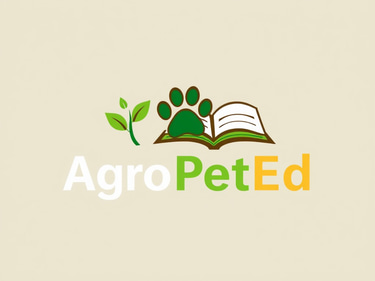
Latest Advances in Poultry Farming: Technology, Sustainability, and Welfare
The global poultry industry has experienced steady growth in recent years, with worldwide production projected to reach ~139 million tons of chicken meat in 2024, up from 115 million in 2016.
ANIMAL PRODUCTION
6/4/20254 min read
The global poultry industry has experienced steady growth in recent years, with worldwide production projected to reach ~139 million tons of chicken meat in 2024, up from 115 million in 2016 (1). This expansion has driven demand for technological innovations to enhance efficiency, reduce costs, and mitigate environmental impacts. Today, precision poultry farming—powered by sensors, cameras, robotics, and artificial intelligence (AI)—is revolutionizing feed management, climate control, and bird health monitoring (2, 3). These smart systems enable real-time tracking of critical variables (temperature, humidity, feed intake) and automated adjustments, improving both productivity and animal welfare.
Automation and Robotics in Poultry Houses
The integration of robots and automated systems is transforming broiler and layer operations. Specialized robots perform repetitive tasks—such as collecting floor eggs, distributing feed and water, cleaning drinkers, or treating leg injuries—with high speed and precision (4, 5). Automating these tasks reduces labor dependency and enables 24/7 operations, boosting efficiency and cutting costs (5). For example, robotic feeding systems ensure precise feed allocation at each trough, optimizing flock nutrition. Additionally, these systems often include cameras and sensors to monitor bird behavior, enabling early stress detection, uniform cleaning, and non-invasive vaccination or treatment. Collectively, robotics enhances welfare by precisely regulating house temperature, lighting, and ventilation while strengthening biosecurity (minimizing human-bird contact) (6).
Artificial Intelligence and Digital Monitoring
AI and computer vision are another critical pillar. 3D and infrared cameras installed in poultry houses capture continuous images processed by deep-learning algorithms (CNN, YOLO, etc.). These technologies can, for instance, automatically count birds in high-density settings with over 93% accuracy (7) or detect abnormal behaviors signaling disease. Recent studies validate AI-based systems that identify sick or weak birds through movement and vocalization patterns, generating early alerts without human intervention. IoT-connected CO₂, ammonia, and humidity sensors dynamically adjust ventilation to minimize harmful gases. This digital integration—a "connected poultry network" or Internet of Poultry—enhances supply-chain transparency. Even blockchain and digital traceability technologies are being adopted to document each flock’s origin and rearing conditions, meeting rising consumer demands (8, 9).
Innovations in Layer Farming
Egg production has seen targeted advancements. One breakthrough is in ovo sexing: hyperspectral imaging and AI determine embryo sex before hatching, eliminating the need to cull male chicks (10). Initially expensive, this technology has become more affordable (dropping from ~€4 in 2022 to ~€3.1 per bird in 2024) and now exceeds 20% adoption in Europe (11). Automated systems also ensure even feed and water distribution in aviaries, reducing weight variability and overcrowding. Advances in poultry genomics are equally impactful: gene-editing tools (e.g., CRISPR) are being tested to confer disease resistance (e.g., against avian influenza) in chickens, with potential applications for layers (12). Precision nutrition leverages sensors to tailor rations for optimal shell formation and lay rates while minimizing nitrogen and phosphorus runoff that pollutes soil and water (13).
Environmental Sustainability
Emerging technologies also deliver ecological benefits. By improving feed efficiency, they reduce waste (the largest environmental footprint in poultry) and nutrient pollution (14). Smart ventilation slashes methane and ammonia emissions, while poultry waste is repurposed—e.g., via biogas digesters. Overall, chicken production has a lower carbon and water footprint than other livestock systems, yielding more protein with fewer resources (15). Reduced pollutants (nitrates, antibiotics) also safeguard soil and water quality (16). These improvements align with societal and regulatory pressures: consumers demand sustainable, traceable practices, and big data and blockchain ensure end-to-end transparency (8, 9).
Health and Animal Welfare
Technology directly enhances bird health. Biometric sensors and non-invasive vision systems detect early lameness or respiratory issues before they escalate. Continuous monitoring (e.g., AI-analyzed vocalizations or activity) can flag outbreaks of salmonella or avian flu, enabling rapid response. Precision nutrition and optimized feed formulations—based on metabolic and genetic data—strengthen immunity and curb antibiotic use. As a result, conditions like footpad dermatitis and zoonotic pathogens in final products decline (6, 13). Environmentally enriched systems (e.g., free-range layers, low-stress broiler handling) are further supported by tech: soft robotics, programmable LED lighting, and even AI-curated music reduce stress and improve quality of life.
Productivity and Profitability
These innovations collectively drive economic gains. Integrated poultry management systems (big data and predictive analytics) demonstrably increase yields and lower operational costs (2). For instance, optimized nutrition prevents massive losses: feed accounts for 60–70% of total expenses, so even minor improvements in feed conversion ratios deliver significant returns (13). Automation reduces human error and enhances flock uniformity and product quality. Remote management via apps or cloud platforms allows farmers to oversee operations anywhere, streamlining planning and supply chains. Current data confirm that poultry tech investments pay off swiftly through higher output, lower mortality, and premium products. As experts note: "Precision poultry farming maximizes bird performance by meeting their needs efficiently, creating a more profitable and sustainable business" (2, 13).
References: The above points are grounded in current industry sources and scientific studies (1, 2, 3, 4, 10, 12, 13, 16) documenting global trends in poultry technology, sustainability, and welfare. Each advancement reflects real-world implementations on modern farms.
(1, 7) AI-Based Monitoring for Enhanced Poultry Flock Management
https://www.mdpi.com/2077-0472/14/12/2187
(2, 8, 16) La tecnología es pieza fundamental en la sostenibilidad de la avicultura - El Sitio Avicola
(3) Cybernetics for Promoting Precision Poultry Farming | Precision Poultry Farming
(4, 5, 6) Robotics in Poultry Farming: The Future Is Here
https://thefarminginsider.com/robotics-in-poultry-farming/
(9, 13, 14, 15) Nutrición avícola: el papel de los sistemas de suministro de alimentos
(10, 11) Increase of in-ovo sexing in the poultry sector - Poultry Producer
https://www.poultryproducer.com/increase-of-in-ovo-sexing-in-the-poultry-sector/
(12)Hacia la creación con CRISPR de pollos resistentes a la gripe aviar - MIT Technology Review en español
AgroPetEd
Information about animals and agricultural practices
© 2025. All rights reserved.
